Dear Lammpsers,
I am trying to simulate collision of an Alumia nano particle with an alumina substrate. I applied Alo. EAM. Alloy pair_style as below:
pair_style eam/alloy
pair_coeff * * ../potentials/AlO.eam.alloy Al O
Actually, although, the simulation can run without any Error. But, I cannot understand the observed configuration. Since, I expect that the particle collide/crash to the surface.
So, any help is highly appreciated to let me know where the problem is.
Regards,

Dear Lammpsers,
I am trying to simulate collision of an Alumia nano particle with an alumina
substrate. I applied Alo. EAM. Alloy pair_style as below:
pair_style eam/alloy
pair_coeff * * ../potentials/AlO.eam.alloy Al O
Actually, although, the simulation can run without any Error. But, I cannot
understand the observed configuration. Since, I expect that the particle
collide/crash to the surface.
So, any help is highly appreciated to let me know where the problem is.
what is the speed (in m/s) with which the particle hits the surface?
axel.
Dear Axel,
units has been considered as metals. so velocity accordingly considers as Angstroms/picoseco or (10^-10 m)/(10-12 sec) means 100 m/s. the velocity applied by below command:
velocity particle set 0 0 -30 sum no units box
, so the -30 means -3000 m/s which is too high ! and so may be the result is correct. I would like to fix velocity to 300 m/s. So, in this simulation I choose velocity 3 as below:
velocity particle set 0 0 -3 sum no units box
but, first the problem is still existing. I expect that the particle crash or fail on the top of the substrate.
Bestr egards,
Bahman

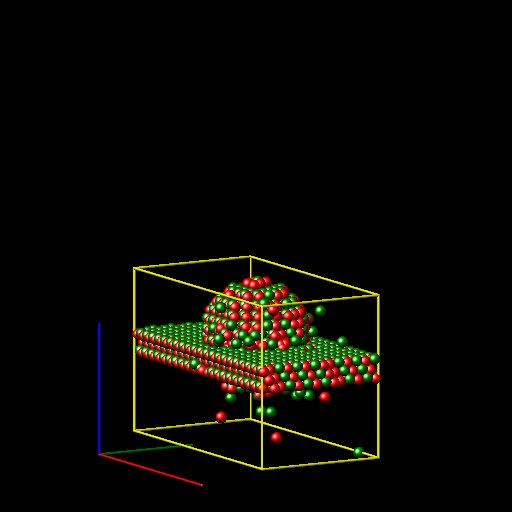
Dear Axel,
units has been considered as metals. so velocity accordingly considers as
Angstroms/picoseco or (10^-10 m)/(10-12 sec) means 100 m/s. the velocity
applied by below command:
velocity particle set 0 0 -30 sum no units box
, so the -30 means -3000 m/s which is too high ! and so may be the result
is correct. I would like to fix velocity to 300 m/s. So, in this simulation
I choose velocity 3 as below:
velocity particle set 0 0 -3 sum no units box
but, first the problem is still existing. I expect that the particle crash
or fail on the top of the substrate.
300 m/s is still close to the speed of sound and you are doing what
looks similar to hitting a piece of dry wall with a cannon ball.
try going *much* slower and see if that makes a difference. if not,
perhaps something else in your input is bad.
axel.
Dear Axel,
thank you for your email. the velocity 300 m/s is correct based on the physics of a problem I am simulation.
I guess first of all I should consider the substrate as a rigid material. then if it doesn’t work again, it means that the input file should be modified.
Regards,
Bahman
Dear Axel,
these figures belong to the simulation in which velocity is 300m/s but the substrate was fixed in this simulation. particle and substrate are alumina.
unfortunately, according to the attached figures it seems that atoms in ALUMINA particle do not moves during hitting to the substrate!!! please let me know your feedback too.
I just applied fix nve to the particle as below:
pair_style eam/alloy
pair_coeff * * …/potentials/AlO.eam.alloy Al O
velocity particle set 0 0 -3 sum no units box
fix 1 particle nve
Any comment is highly appreciated.
best regards,
Bahman
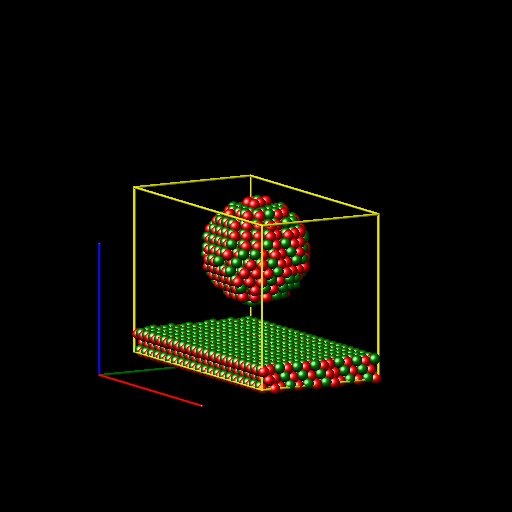
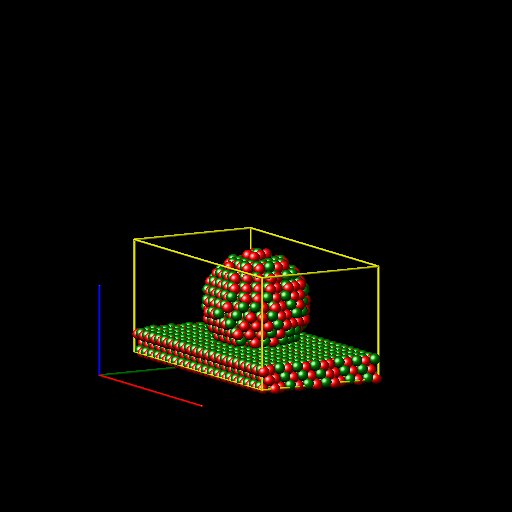
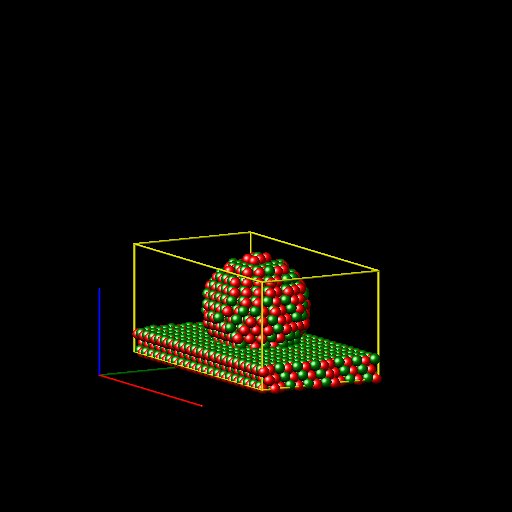
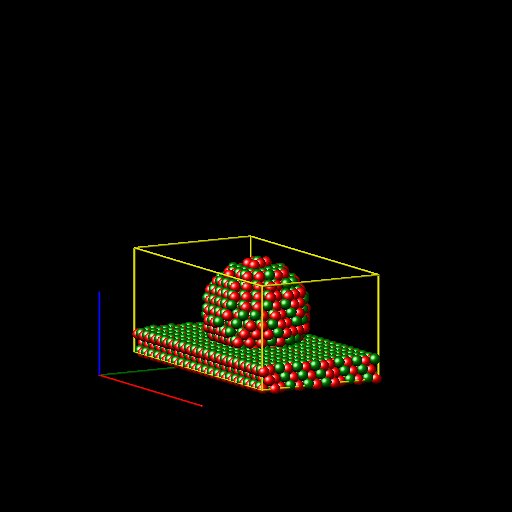
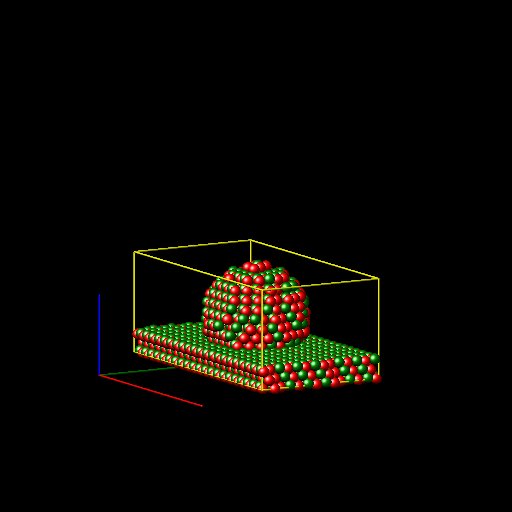
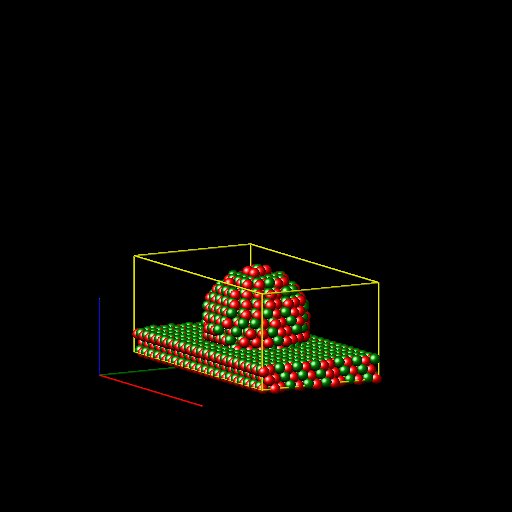
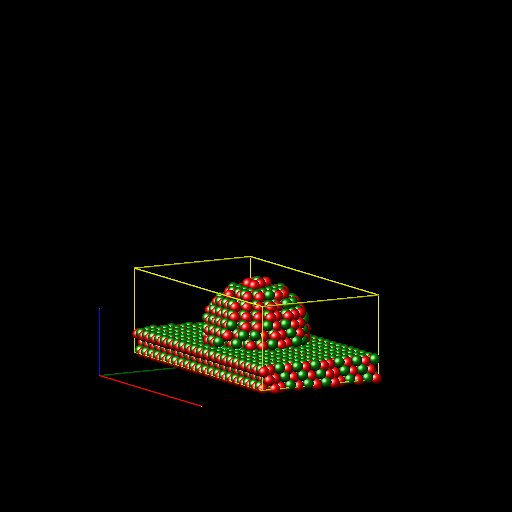
Dear Axel,
these figures belong to the simulation in which velocity is 300m/s but the
substrate was fixed in this simulation. particle and substrate are alumina.
unfortunately, according to the attached figures it seems that atoms in
ALUMINA particle do not moves during hitting to the substrate!!! please let
me know your feedback too.
LAMMPS does what you tell to do. ...and since you do not pay attention
to advice being given, i have no more to say at this point.
axel.
Axel,
thank you for your email. actually, I found the problem. input file works correctly for a simple Lenard Jones pair_style which means there is something wrong in my Al2O3 lattice parameters which I should check it.
Regards,
Bahman







